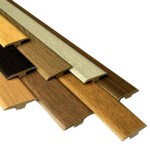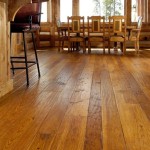Transitioning from vinyl flooring to carpet can be a tricky task. It is important to choose the right material, technique, and tools for the job in order to ensure a successful transition. In this article, you will learn about the different options for transitioning from vinyl flooring to carpet, including the materials, tools, and techniques you will need to complete the job.
Types of Transition Materials
When transitioning from vinyl flooring to carpet, there are a few different types of transition materials that you can use. The most common transition materials are t-molding, reducers, and transition strips. Each of these materials have their own unique advantages and disadvantages.
- T-Molding – T-molding is a popular choice for vinyl flooring to carpet transitions because it provides a seamless look. T-molding is made from a durable material such as aluminum or plastic and is available in a variety of colors and finishes. The downside to using t-molding is that it can be difficult to install and may require professional help.
- Reducers – Reducers are typically used in doorways and are designed to bridge the gap between two different flooring types. They are usually made from a flexible material such as rubber and can be found in a variety of colors and finishes. The downside to using reducers is that they are not as aesthetically pleasing as t-molding.
- Transition Strips – Transition strips are an affordable and easy-to-install solution for transitioning from vinyl flooring to carpet. Transition strips are usually made from wood or vinyl and come in a variety of colors and finishes. The downside to using transition strips is that they can be difficult to match to the existing flooring.
Tools and Techniques
Once you have chosen the right transition material for your project, you will need to gather the necessary tools and techniques for installing it. Depending on the type of transition material you are using, you may need a drill, saw, sandpaper, caulk, and a variety of other tools. Additionally, you will need to be familiar with the installation techniques that are specific to the transition material you are using.
Preparing the Floor
Before installing the transition material, it is important to properly prepare the floor. This includes cleaning the floor, checking for any damage, and making any necessary repairs. It is also important to make sure that the floor is level and to check for any potential moisture issues.
Installing the Transition Material
Once the floor is prepared, you can begin installing the transition material. Depending on the type of transition material you are using, the installation process can vary. T-molding and reducers require adhesive and can be difficult to install. Transition strips are much easier to install and require only a few simple tools.
Finishing Touches
Once the transition material is installed, you can finish the project with a few finishing touches. This includes caulking any gaps and edges, filling any holes, and cleaning the area. Additionally, you may want to add a sealant to the transition material to help protect it from wear and tear.
Conclusion
Transitioning from vinyl flooring to carpet requires the right materials, tools, and techniques. T-molding, reducers, and transition strips are the most common materials used for this type of job. It is important to properly prepare the floor and to follow the specific installation instructions for the transition material you are using. With the right materials and techniques, you can successfully transition from vinyl flooring to carpet.















Related Posts








